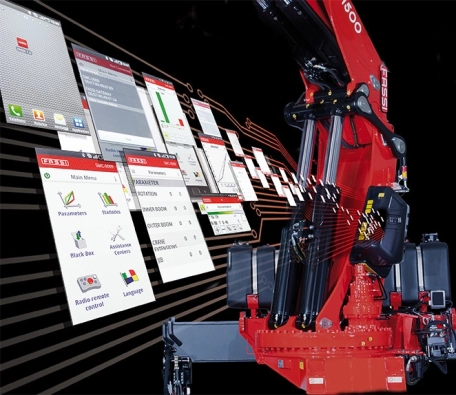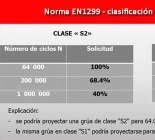
 Contact
Contact 
 How can we help?
How can we help? - 01Chat we us
We are here to serve you.
We will assist you in person and comfortably through the Internet from 9.30h to 14h and from 15h to 18h.
- 02Call us
Contact
Monday to Friday from 8.30 - 14h / 15h – 18h
- 03Do you prefer that we call you?
Leave us your phone number and we will contact you to help you with whatever you need.
Schedule of attention: 8.30 - 14h / 15h – 18h, monday to friday.
RELATIONSHIP BETWEEN THE "CLASSIFICATION" OF A CRANE AND ITS PERFORMANCE / LASTING LIFE
An important fact to bare in mied when knowing the performance of a crane, is to identify under which classification the crane is manufactured. Let us clarify this point: when buuilding a crane, the manufacturer must take into account three fundamental factors:
- Structructural crane calculation: basically to decide the type of material with which to make the structure of the crane taking into account its geometry, the load it will withstand, a safety factor, climatic effects, dynamic effects ...
- “HC/HD” class or dynamic effect on lifted loads: the operation of the distributor installed will influence in the capacity of the structure of the crane to withstand a greater load capacity, therefore normally non-proportional on/off cranes without automatic speed management have a high dynamic effect which greatly reduces its lifting power to safeguard its structure, if on the contrary, the crane has a proportional distributor with automatic speed management on the same structure the crane achieves a higher lifting capacity. There are 3 HD levels: the lower the dynamic effect, the greater the loading capacity of the crane, always taking into account the same safety factor.
- “S” class or intensive use of crane: in summary this refers to the useful life or the number of cycles for which this crane has been designed and manufactured. Here we also find up to 6 levels, between S0 and S5, so that cranes designed and manufactured in different "S" classes can be used for the same application with different intensity: light, moderate or intensive. In the case of load-lifting cranes with hook, class S2 is the highest and guaranteed intensive use. This translates into greater fatigue resistance = longer crane duration over time. In the attached image you will see the difference between the two classes.
Currently, all manufacturers offer cranes in class HC1-HD5 and S1-S2, therefore it is important to know the concepts of this classification to compare cranes of the same class and in particular the effective capacity to move the loads shown in the diagrams (static or retention curves / dynamic curves).
From this it follows that the cranes projected in class S2 will have twice the useful life in an intensive use (to 100%) that a same crane projected in class S1. Hence the importance of verifying this data when looking at the purchase of a crane.
Fassi projects its entire range of cranes according to class S2, unlike other manufacturers.





